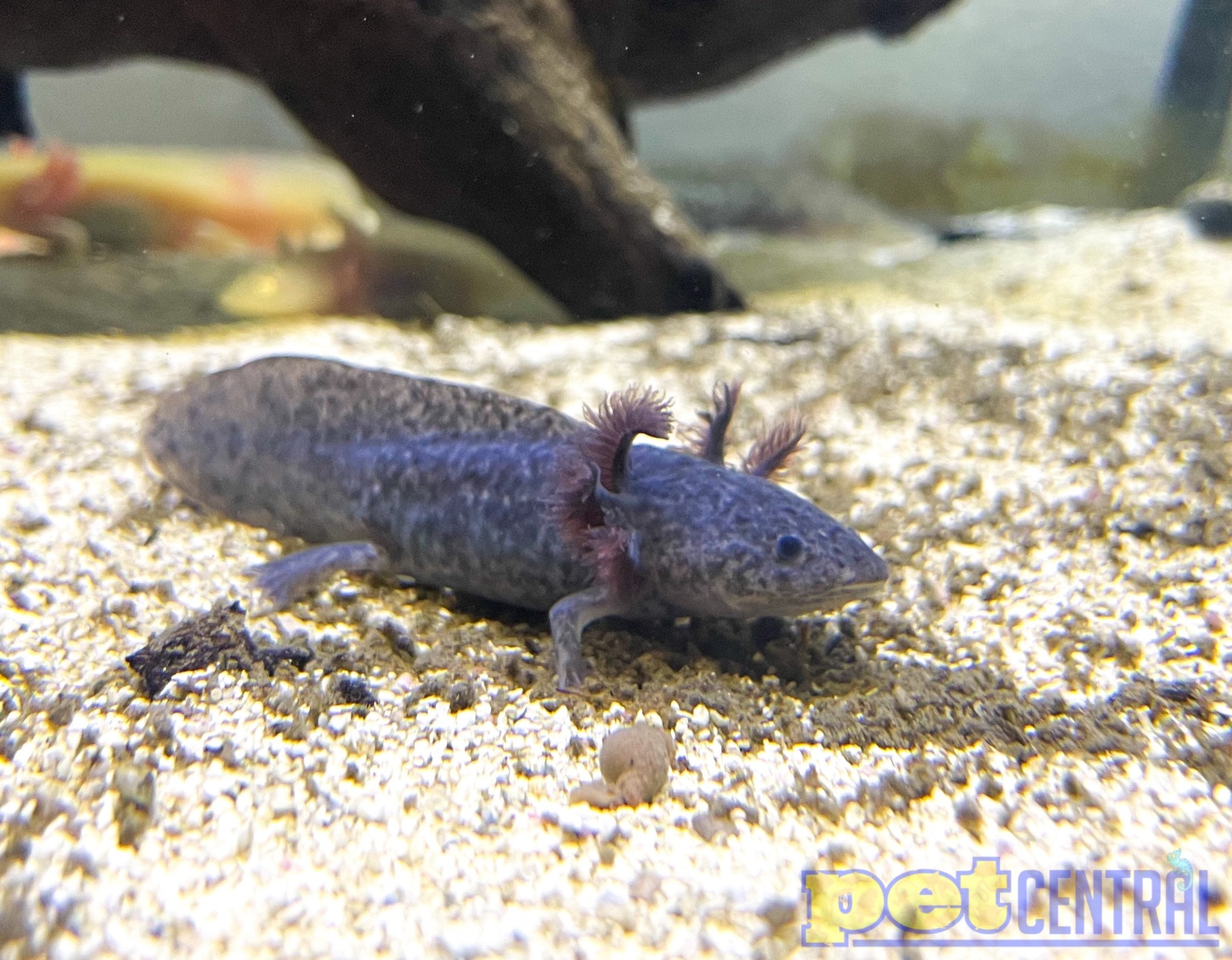Pet Central Quick Picks
UPDATED 12/19/22 - LINDSAY S.
Facts to Know About Axolotls
Background
They originate from the cool waters of Mexico. Axolotls live 10 to 15 years in captivity and can grow up to a foot long. They are aquatic salamanders that can regenerate their body parts!

Behavior
Axolotls tend to be a very calm species that spends a lot of its time hanging out at the bottom of your aquarium. They enjoy rearranging sand & plants, hanging out in caves, and tend to be more active at night. Because axolotls are carnivores, they will eat things that fit inside their mouths; this includes fish and other small axolotls.
It is possible to keep axolotls together, but we recommend that they are the same size. This does not guarantee that they will always be friendly toward one another as they can bite off limbs and other parts, which over time will regenerate.
We don't recommend housing axolotls with other small fish, there is a risk of those fish becoming food for the axolotl.

Diet
As carnivores, they eat meaty foods such as bloodworms, brine shrimp, nightcrawlers, Mysis shrimp, beef heart, and even meaty pellets made for axolotls. Juvenile axolotls will need to be fed more often than in their adult stages, where they will only eat a couple of times a week.
Aquarium Conditions
*Recommend water temperature: 60-72°
DO NOT USE A HEATER WITH AXOLOTL
Before getting your axolotl, setting up their aquarium is the most essential step. You can read more about cycling your aquarium water here.
When selecting filtration, a couple of things to keep in mind; axolotls are pretty wasteful, so your filter needs to clean the water while maintaining a low flow. You can use a canister filter, sponge filter, hang-on-the-back filter, or an internal filter that would need to be oversized to compensate for the amount of waste.
With any fish tank try to keep your aquarium away from any windows that get a lot of sun exposure. This will aid in growth of algae in your tank, and need more maintenance than normal.
Water Changes
When doing a water change, we recommend doing one every 2 weeks, at about 25-30% water change. *It is not necessary to take the axolotl out of the tank when doing a water change* The best course of action to do a successful water change is in these steps:
- Clean all sides of your tank
- Stir up the sand to get any type of sediment that is left there. ( Left over food, Poop, etc.)
- Take decorations out, wipe them down with a wet cloth NO SOAP and place them back in the tank.
- Start taking water out, either with a cup or a Siphon.
- When you add water back, using tap water is perfectly fine. Add Tap water conditioner after you've filled up the tank!
Substrate and Decorations
We recommend at least a 20-gallon starter aquarium for your axolotl. It is best to use fine sand for their substrate since they like to sift and dig! Avoid using large or coarse substrate as it can cause impaction issues if swallowed. If you are feeding your axolotl pellets, we highly recommend getting the correct size for your axolotl! *Any axolotl on our website ranging between 2-4" is eating 3.2mm Axolotl Pellets *

Décor & Lighting
Aquarium decorations such as driftwood, caves, large rocks that are not made for substrate, and live plants give your axolotl places to explore and hide! The more hiding places the better for your axolotl! Especially if you have more than one!
Since axolotls are primarily nocturnal, no overhead light is needed. If you choose to light your aquarium, we suggest an adjustable LED light that you can lower the brightness of. If growing live plants, we would recommend additional hiding places and caves to make up for the extra light exposure.


Leave a comment